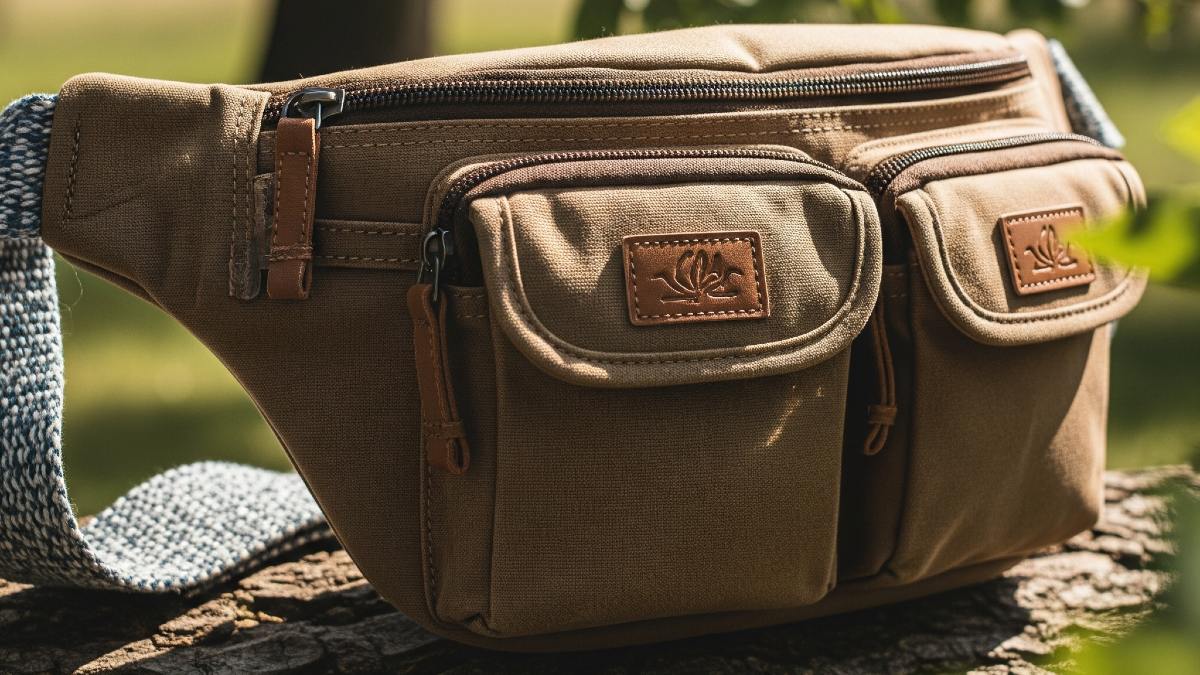Canvas belt bags have become a leading light in eco-friendly fashion. Made from durable, natural fibers meant to withstand time and wear and tear, these bags help reduce single-use plastics and fast-fashion waste.
By choosing to work with recycled, fair-trade, and water-repellent canvas, both designers and consumers are helping to steer the industry in the direction of cleaner, more ethical practices.
Recycled Canvas: Durable and Low-Impact
Recycled canvas is made from either post-consumer cotton scraps or old denim. Mills don’t just throw these fibers in the trash; they’ll sort them, clean them, and re-spin them into yarn again.
This repurposing approach conserves water and energy needed to grow new cotton, thereby avoiding the disposal of textile waste in landfills. For those considering belt bags for men and want a rugged, all-around pouch, recycled canvas is still tough as nails but uses a fraction of the footprint used to make virgin canvas.
Fair-Trade Canvas: Ethical Support for Workers
By using fair-trade canvas, cotton growers and weavers can earn a fair wage and work in safe conditions. Independent bodies audit farms and workshops to ensure they comply with rigorous standards on pay, hours, and safety.
If you buy fair-trade canvas belt bags, you’re supporting better livelihoods and better land management, bringing down soil erosion and pesticide runoff on participating farms.
Water-Repellent Canvas: Functional & Safe
To repel water, canvas is frequently treated with plant-based waxes — say, soy or beeswax — or low-impact polymer coatings that are free of toxic PFAS chemicals.
These treatments make rain and spills bead off while still allowing the fabric to breathe. A reliable water-resistant finish keeps your essentials dry when caught in unexpected showers too, so no need for a one-use plastic cover.
Environmental Benefits of Canvas Belt Bags
A single, durable canvas belt bag can replace dozens of plastic pouches or cheap fabric bags that tear easily.
One durable canvas bag can keep hundreds of plastic bags out of landfills over its lifetime. And by selecting recycled and fair-trade canvas, you’re also promoting lower water and energy use, lower greenhouse gas emissions and fair labor.
How to Take Care of Your Canvas Belt Bag
- Spot Clean: Create a mixture of mild soap and cold water. Massage gently into stains with a soft brush, then wipe away excess with a damp cloth.
- Dry: Lay flat in the shade to air-dry. Steer clear of hot dryers or direct sunlight, which can shrink or fade the fabric.
- Reproofing: For waxed or water-resistant canvas, reapply eco-wax or a DWR (durable water repellent) spray annually. Rub the wax in with a clean cloth and use a little heat to set it evenly—a hair dryer on low will do.
- No Strong Chemicals: Bleach and other detergent cleaners will spoil the gloss. They can weaken fibers and damage protective finishes.
- Storage: Store the bag empty and dry. You need to fold it softly or hang it from the band so it maintains its shape and crease-free structure.
Conclusion
Canvas belt bags for men or unisex styles work all of the elements of recycled, fair trade, and water-repellent canvas into one tough-as-nails piece that’s easy on the planet.
These bags prove that ethical fashion and practicality can coexist harmoniously through their thoughtful production and effortless care. Let your next pouch pick be a step toward cleaner, fairer fashion.


